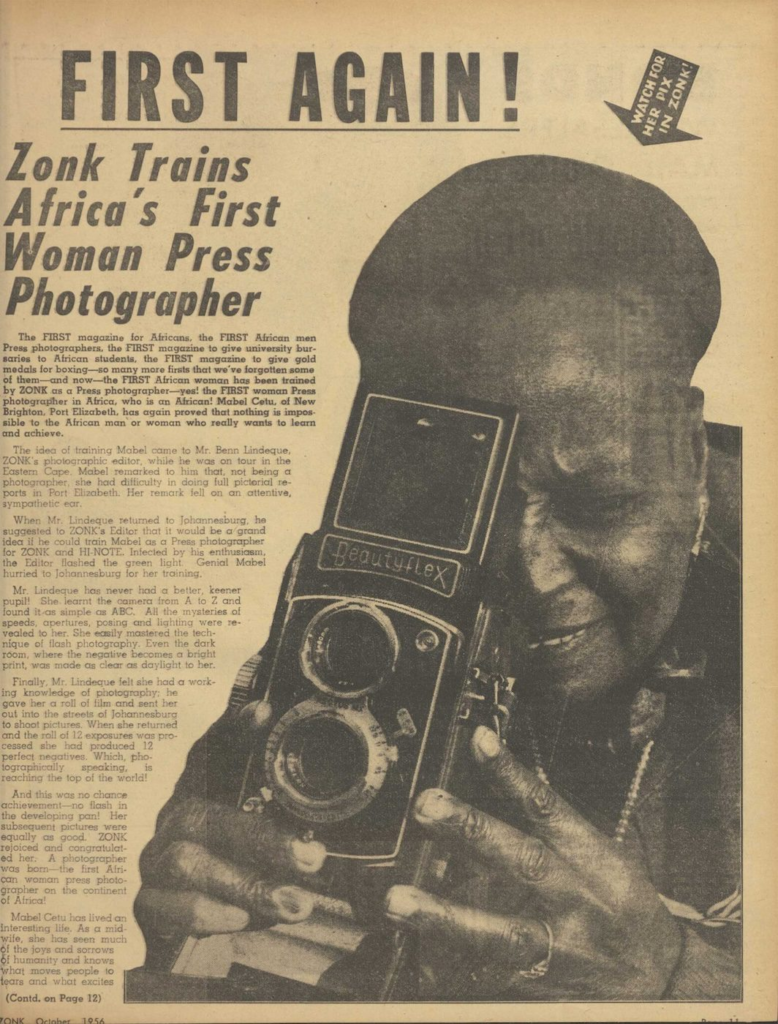Mabel Cetu (born Sidlayi) is considered the first black woman photojournalist in South Africa. Fondly known as “Sis May” she served as a nurse, councilor, community organizer, and broadcaster all of which defined her careful and considerate approach to her practice as a photojournalist. Cetu was born in 1910 in Orange Free State but she later settled in New Brighton, Port Elizabeth (now Gqeberha) until her passing in KwaDwesi in 1990.
She received her photography training at Zonk! Magazine as recorded on the cover of their October 1956 issue. From there, she contributed her talents to various publications such as Golden City Post, Drum magazine, Usombomvu (the Herald’s weekly title), and even state-run Radio Bantu. These publications, widely read by Black audiences, provided her with avenues to express her views and document the realities of her community.
Despite her achievements, some accounts of who Mabel Cetu was and what she stood for are confusing. Some accounts record her political activism against the apartheid regime and others show her as a recognized figure among the white population. Cetu’s appointment as a “community councilor” or “Black Local Authority” (BLA) for the Khayamnandi Town Council in the early 1980s under apartheid. These positions were created with the aim to give some power to African communities. However, these positions were seen as tools of co-optation by the apartheid state which makes Cetu’s acceptance of such role very questionable which ultimately led to an attack on her home in 1985, and her resignation from politics.

One significant aspect of her life was her involvement as a “community councilor” or “Black Local Authority” (BLA) for the Khayamnandi Town Council in the early 1980s. These positions, created under apartheid, aimed to grant limited power to African communities. However, they were also seen as tools of co-optation by the apartheid state. Mabel’s acceptance of such a role sparked controversy and led to an attack on her home in 1985, ultimately prompting her resignation from politics.
Through her lens, Mabel Cetu portrayed the everyday life of black communities in South Africa in the 1950s. Unlike the apartheid regime’s portrayal of Black communities as isolated and stagnant, Cetu’s photos showed them the vibrancy and richness in both tradition and a modern spirit. By capturing everyday life, complete with details about the people and their place in Gqeberha, Cetu defied the forced separation of apartheid. Her work tells a story of resilience and community.


